|
Intersections: Gender and Sexuality in Asia and the Pacific
Issue 50, December 2023 doi: https://doi.org/10.25911/ZB7E-X359 |
|
Approaching Dalit Masculinities in Article 15 (2019) and Jai Bhim (2021) Argha Basu and Priyanka Tripathi The predominance of the feminist concern and a patriarchal metanarrative within the gender metaphysics of India[1] has long subsumed the issues of masculinity. The existing study around the representation of masculinity in Indian cinema primarily remains limited to its hegemonic and sparsely appearing non-hegemonic representations. The critical contention falls short of surpassing the analysis of historiography, Brahminical gaze,[2] and generic (or slowly evolving) representation of the Dalit communities, even in cases of films where the caste question becomes predominant, like Aarakshan (Reservation) (2011),[3] Manjhi (2015),[4] Guddu Rangeela (2015),[5] Sairat (Wild) (2016),[6] Mukkabaaz (The brawler) (2017),[7] Kaala (Black) (2018),[8] Asuran (Demon) (2019)[9] and more. To approach Dalit masculinity, one must comprehend the location of a Dalit man within the spectrum of caste-conscious, socio-cultural and socio-economic systems. The Dalit man claims a traditional and hierarchically superior position within the domestic space, reflecting the essence of hegemonic masculinity, but they are identified as inferior to upper caste men. This inherent complexity of Dalit masculinity as a simultaneous subversion of, and compliance with, hegemonic masculinity fosters the scope of this investigation. The article aims to provide a thorough analysis of the depiction of Dalit masculinities (both as a reflection and subversion of hegemonic masculinity)[10] within the grand narrative of Indian masculinity and the emergence of several strands of non-hegemonic masculinities in the films Article 15[11] and Jai Bhim.[12] The primary texts selected for this article belong to two different canons of the Indian film industry.[13] While Article 15 directed by Anubhav Sinha, emerges from the œuvre of Hindi Cinema, Jai Bhim directed by T.J. Gnanavel comes from the ambit of Tamil Cinema. A consideration of the current trend of popular films being dubbed into multiple Indian languages foreshadows a tendency to bring in a wide array of audiences for these cinematic texts. Besides Tamil, Jai Bhim was dubbed in four other Indian languages, that is Hindi, Telugu, Malayalam and Kannada. Similarly, Article 15 was remade into a Tamil film Nenjuku Needhi (Justice for the heart) (2022),[14] a couple of years after its release. Sinha's work opens with a sequence of three girls being sexually violated in a moving bus, with two of them being killed. This is followed by the arrival of Ayan Ranjan (played by Ayushmann Khurrana), an Indian Police Service (IPS) officer who was assigned to the village Laalgaon. A police case is reluctantly launched by the local authority for the missing girls. The rest of the film is a search for the third girl, a struggle against the tampered investigation, and an attempt at decoding the identity of the killers. A parallel plot runs through the film concerning the conflict between a young Dalit leader, Nishad (played by Mohammed Zeeshan Ayyub), who is simultaneously fighting against the hypocrisy of the Dalit leadership and the upper caste repressions. The film ends on a bitter-sweet note with the death of Nishad and the last missing girl being found alive. Jai Bhim builds up the narrative of oppression and paints an arc of the context through the first thirty minutes of the film. The cinematic narrative goes back and forth in building up the situation. When Rajakannu (played by K. Manikandan), the Dalit male lead of the film, goes missing from police custody after being wrongfully arrested and tortured for a crime he did not commit with a few of his family members, lawyer Chandru (played by Suriya) gets introduced. Rajakannu's wife Sengeni (played by Lijomol Jose), and her fight for justice with the help of Chandru build the crux of the film. The courtroom drama ends with justice being exacted and the criminals behind bars. The selected filmic texts address a pan-Indian consciousness through their representation of marginalised communities and the potential of the legal structure in exacting justice. The broader structures in both these films share a few commonalities that governed the initial sampling. The selected films belong to the niche of 'law films,' identified and developed by Orit Kamir. According to Kamir, law films function on two premises. First, both the discourses of law and film must simultaneously be addressed in the work and second, there must exist a large-scale legal indoctrination.[15] The premise of a petition of habeas corpus and further legal arguments around it provides the scope of indoctrination in Jai Bhim, whereas Article 15 uses the eponymous constitutional law that prohibits 'discrimination on grounds of religion, race, caste, sex or place of birth.'[16] Though Kamir leaves provision for fictional cinematic judgements and imaginary legal systems, Jai Bhim traces its inspiration to a real-life incident from 1993 in Muthanai village in Cuddalore district, Tamil Nadu India.[17] Sinha too offers a disclaimer that the film was conceived out of several real-life incidents. Therefore, a refraction of the empirical database might be expected in both media texts. In the works of Sinha and Gnanavel, we come across acts of violence (carried forward by the state, the misuse of the legal apparatus and corrupt officials) against individuals of marginalised communities, missing Dalit bodies, the intervention of a righteous government agent, the tactical use of law and the eventual justice. These structural similarities, coupled with a subtle didactic motif, while offering the complicated subjectivities of Dalit lives and variegated lived experiences, lay the foundation to approach the nuances of Dalit masculinities. The term 'Dalit' is too malleable to conform to one definition. But the generic understanding of the identity stems from the chaturvarnya system.[18] The Dalits were considered to exist beyond this caste design. Within the legal context of India, these individuals are identified as Scheduled Castes and Scheduled Tribes. In 2018, The Information and Broadcasting Ministry, working in tandem with the Bombay High Court[19] criticised and negated the use of the term 'Dalit' within socio-legal and socio-cultural discourse (specifically by the media organisations) of India. This directive was met with two different strands of criticism. On the one hand, the absorption of Dalit subjectivity into the metanarrative fold of the Scheduled Tribes of India was received as a rejection of identities.[20] The other argument was in favour of the judgement as it liberated the Dalit identity from the religion-specific subjectivities of harijan.[21] In the film Article 15, during a conversation between Ayan Ranjan and Nishad, who is organising a rally to protest the alliance between Mahantji (played by Naval Shukla), an upper caste political leader and Shanti Prasad (played by Iccha Shankar), the Laalgaon Dalit leader, this troubled Dalit subjectivity gets deftly narrated. As their argument heats up, Ayan's assistant Mayank (played by Ashish Verma) asks Nishad if nothing has changed since the independence of the country (for more than seventy years). To which Nishad replies, 'A lot has happened … but sometimes we become harijan (untouchables). sometimes bahujan (scheduled tribes). We just cannot make our way through to the count of the common citizens so that we too can be a part of the nation and its anthem equally.'[22] The practice of this differentiation often ends in the victimisation of the Dalits instead of empowering them. The opening sequence of Jai Bhim (2021) takes a dig at this caste-based discrimination. Set in 1995, the film begins with the identification of Dalit convicts by their surnames. While convicts with the surnames Devar, Vaani, Gaundar, Naidu and Mudaliyar (upper caste surnames) were released, the bearers of Puruvar, Merlor, Ottar, Karovar and Irula (lower caste surnames) got re-arrested. Gnanavel uses the narrative technique of a third-person limited point of view to voice the pathos of these marginalised lives through one of the by-standing policemen who enquired from another official about the crimes of these separated convicts. He replied, 'For them, their birth is the crime.'[23] The intentions of the directors in their presentation of the Dalit lives become conspicuous through these instances. Both the films, at their onsets, set a paradigm of caste consciousness. For the rest of this article the term Dalit will be used as a reference to individuals oppressed within the grand narrative of the nation as the other; individuals who are destined to struggle throughout their lives and never considered equal despite their efforts to rise above the occupational standards set by society and individuals who are institutionally convinced of their inferiority. Theoretical frameworks, methodologies and research question The article employs the methodological tools of multidimensionality, context and mise en scène analysis to read into the complex threads of Dalit masculinity as a simultaneous subversion of and compliance with hegemonic masculinity. The coupling of multidimensionality and masculinity theory within the legal discourse was introduced by Athena D. Mutua in her article 'Multidimensionality is to Masculinities What Intersectionality is to Feminism.'[24] Though multidimensionality has a long history, this association offers a tangible model for analysing the experiences of marginalised men in society. Mutua celebrates the multidimensional turn in intersectionality theory as it better explains the synergistic interaction between categories like gender and race, as well as the part that context plays in that interaction. Multidimensionality situates masculine identities and practices within the framework of socially constructed hierarchies. Besides class, the context of India foreshadows the category of caste in identifying masculine subjectivities. The reference frame of identification for Dalit men integrates three primary threads (or dimensions), i.e., gender, caste and class. Hence, multidimensionality is a helpful tool for illuminating the gendered, racial and caste-based profiling of Dalit masculinities. Mutua’s article can be read as an expansion of Darren Hutchinson's notions concerning multidimensionality. The criticism around intersectional models, where the experiences of different intersections were often considered overlapping (as seen in cases of black women), created the need for a parallel framework. The most thorough study of the effects of these criticisms was provided by Hutchinson, who pushed for the switch from intersectionality to multidimensionality theory. He preferred multidimensionality because it could better express the intrinsic complexity and permanently layered nature of oppression and everyone's identities. Mutua writes that multidimensionality reconfigures the fundamental focus of intersectionality as introduced by Kimberlé Crenshaw as a tool for defining multi-layered subordination (specifically for women).[25] In cases of men of colour or non-binary gender identity, the intersections can simultaneously be one of privilege and subordination. This model can be appropriated in the context of caste dynamics for men in India. In Article 15, during the early hours of a hit-and-run investigation, Ayan walks up to the police officers inquiring about the temple conflict. They tell him that the Dalits cannot enter the temple and the ones who walked in were beaten up by Mahantji's ashram hooligans. On further probing, it surfaced that Mahantji is a Kaanyakubj Brahmin. The conversation becomes intriguing as Ayan attempts to decode the caste dynamics at work.
Jatav (played by Kumud Mishra): Yes Sir. Ayan: Same caste as that of the boys who got beaten up? Jatav: No Sir. I am a Chamar, they were Pasi. We are way above them in the SC/ST list. We have nothing to do with them. We don't even eat the food they touch. Ayan: As I cannot eat the food you touch? Jatav: Yes Sir. … Ayan: Who am I then? Mayank: You are a Brahmin Sir. Ayan: So, I belong to the same caste as Mahantji? Mayank: No Sir, he is Kaanyakubj, you're Saryuparin. He is the top Brahmin. Ayan: What the fuck is going on here?[26] What appears more disturbing than the complicated hierarchy of the convoluted glimpse of caste dynamics in the quoted extract is the ease with which the characters negotiate their identity. Without realising the men from the margin oscillate between a position of power and oppression as is observed in the case of Jatav, who feels empowered as a police officer but is conscious of his caste subordination. The use of legal narratives in comprehending the Dalit men in both films furthers the rationale behind employing the framework of multidimensional masculinity. Besides multidimensionality, the article employs the methodological tools of contextual analysis[27] to aid the understanding of the culture, time and place that inspired the making of the film and mise-en-scène[28] analysis to approach the representation of on-screen Dalit masculinity in the selected films. Both in the cases of Article 15 and Jai Bhim, the following section will invest in the comprehension of Dalit subjectivity (as a male) within the broader context of society, the reflection of the timeline and their proximity to real-life lived experiences. The cinematic representation of the Dalit bodies, their dwellings, gestures and postures will add to the analysis. The analysis of dialogues as a wider exploitation of discourse analysis[29] will prevail over the entire scope of the article. Anchoring the discussed methodological models of multidimensionality and film analysis (camera angles, props, light, space, décor and appearance of characters), this article intends to approach two questions. How do Dalit masculinities function as simultaneous depictions of hegemonic and non-hegemonic masculinity? And what are the possible reflections of an alternative masculinity narrative? Approaching Dalit masculinity in Indian cinema In 2022, Joshil K. Abraham and Judith Misrahi Barak's edited volume The Routledge Companion to Caste and Cinema in India[30] added a hefty collection of critical essays to the available body of academic interventions concerning the caste question in Indian cinema. Among twenty-nine essays collated in this work, the facets of Dalit masculinity are peripheral. Barring one essay by B. Geetha,[31] none of the works takes into consideration the dynamics of Dalit masculinity as reflected in Indian cinema. Incidentally, frequent use of the depiction of hegemonic masculinity as a framework is observed to analyse the plight of women within the vortex of caste. Hegemonic masculinity has long reigned in the ambit of Indian film history. Before economic liberalisation, that is1991, male protagonists in popular films had primarily showcased core masculine values[32] as discussed by R.W. Connell in Gender and Power: Society, the Person, and Sexual Politics.[33] The sustenance of the dominant position of being a man against that of women and other subservient masculinities shapes the foundation of hegemonic masculinity. The expansion of the idea by Connell from 1987 to 1995 has not only acknowledged the existence of the diversity of masculinity (both hegemonic and non-hegemonic) but emphasised their analysis.[34] The theoretical model was refined further by James W. Messerschmidt. He introduced a hierarchical structure to masculinities. It primarily emerged from the experience of prejudice and violence faced by homosexual men in the West.[35] The socio-cultural position of homosexual men or men of colour from the West stands analogous to the third-world men within the caste dynamics.[36] Thus, this article attempts to appropriate the notion of hegemonic masculinities and subservient masculinities vis-à-vis the representation of Dalit men in Indian cinema. A brief overview of the variegated shades of hegemonic masculinity prevalent in the Hindi and Tamil film industry; and their impact on other forms of masculinities is required as a pretext for understanding the selected films further. Meghna Mehra's approach to cataloguing the plurality of masculinities in Hindi films since its inception in 1913 in India is intriguing.[37] Considering the initiative of the Indian government in recognising the social and artistic merit of films after the economic liberalisation, the selection of the timeline for narrating the diverse models of masculinity in Bollywood by Mehra becomes significant. From the angry young man[38] (Deewar (The wall) (1975),[39] Sholay (Embers) (1975)[40] and more), through the playboys (Dil Chahta Hai (The heart desires) (2001),[41] Ladies vs Ricky Bahl (2011)[42] and more), bad boys (Vaastav: The Reality (1999),[43] Dhoom 2 (Blast 2) (2006)[44] and more), saviours (Mission Mangal (Mission Mars) (2019),[45] Chak De! India (Let's go! India) (2007)[46] and more) and toxic men to the not-so-angry ideal male partners (Tanu Weds Manu (2011),[47] Jayeshbhai Joordaar (The mighty Jayeshbhai) (2022)[48] and more), the Hindi film industry has offered a wide range of hegemonic and non-hegemonic masculinities. A critical account of contemporary Indian cinema must acknowledge the changes that came with economic liberalisation.[49] Post-liberalisation Indian cinema has witnessed the rise of cosmopolitanism.[50] During the same time, the Hindi film industry (the largest film industry in the country)[51] saw considerable growth in the popularity of actors like Shah Rukh Khan, Aamir Khan and Salman Khan. They embodied the practices of neo-liberal masculinity[52] beyond their peripheral religious identities. The majority-minority religious divide was breached by the reflection of shifting male sex roles on screen. The neo-liberal hero was liberated from their state-assigned identity as Muslim actors formed the trio. This state-identified minority status neither affected their reception nor reputation. They reflected a subversion of hegemonic masculinity through the depiction of compassion and emotional vulnerability. With the emergence of alternative models like metrosexual masculinity,[53] what this new wave of masculinity subtly endorsed, was a reconceptualisation of the existing patriarchal order[54] where men resurface as the saviours and protectors of women and other peripheral masculinities. Within the popular scope of Tamil cinema, the predominant projection of masculinity was that of an aggressive man with acquired skills to overcome troubles to emerge victorious in the end.[55] As part of a panel discussion on 'Masculinity in Films,' the convenor of Thinnai Talkies[56] Ratheesh Krishnan opined that the idiosyncratic qualities of masculinity as offered by mainstream Tamil cinema can be boiled down to the need of 'being in control' for the man (male protagonist) in the film.[57] Connell, while discussing hegemonic masculinity, has highlighted the epithet (hegemonic) more than the noun (masculinity). For him, hegemonic masculinity functions through the creation of fantastic masculine figures by the media and the following of those characters. These characters do not necessarily reflect the qualities of real-life men but rather create an ideological perception of manhood around which both men and women are comfortable navigating.[58] The need to be in control also becomes evident in the representation of non-hegemonic masculinities. For example, despite being an emblem of non-hegemonic masculinity (with his empathy, docile attitude, and affinity for household chores and romantic acts) in the film Dilwale Dulhania Le Jayenge (The big-hearted will take the bride),[59] the character of Raj Malhotra (played by Shah Rukh Khan) remains in control of the decision-making process. When he was asked by Simran (played by Kajol) to elope, as her father would never consent to their wedding, he asserted that he would not marry her without her father's blessing. Simran played along with the looming uncertainty of their conjugal union. The agency of control is prevalent in the depiction of non-hegemonic masculinity in Tamil cinema, as well as seen in Jeans (1998),[60] '96 (2008)[61] and others. Within the popular discourse of films in the Hindi and Tamil film industry, the representation of male Dalit characters and their masculinity offers a novel narrative. Their subjugated position within society as individuals belonging to lower castes offers them a problematic position. As a part of the gender binary within the Dalit community, they claim a hierarchical superiority but simultaneously appear at the bottom of the variegated strands of casteist and classist perceptions of masculinity. When Rajakannu in Jai Bhim was going to work in the brick factory leaving his family behind, the audience experiences an exchange between him and his wife Sengeni as she asks him to take her along. As the man of the household, he decides a pregnant Sengeni should wait back home. The preceding sequence presents two significant dialogues where the position of this Dalit man gets questioned as one of the female workers in the factory questions his decision to leave his wife behind and tells him that she has raised eight children while working in the factory. Rajakannu's intent in leaving his wife behind appears empathetic and loving, but this normalised male decision-making role defines the root of hegemonic masculinity. Even within the Dalit socio-economic world order, masculinity is not necessarily free from the traditionally masculine roles. The second dialogue is between Rajakannu and the owner of the factory, who denies him leave for a couple of days and abuses him for asking for more wages and favour than he deserves (according to the owner). A similar ambivalence concerning the position of the fathers of the girl victims who were raped and hanged in a tree in Article 15 can be brought into question. Since the unfolding of the events, the corrupt police officer Brahmadatt Singh's (played by Manoj Pahwa) convincing narrative of honour killing (though untrue) locates the men within the Dalit community as superior to women. These men were eventually coerced into accepting the false charges and were put behind bars by the upper caste officers. The vulnerability and the silence of the women associated with these Dalit men make the gender divide more obvious. To approach this dichotomous location and representation of the Dalit males in two selected filmic texts, the methodological model of multidimensionality has been adopted. Mise-en-scène and Dalit masculinity Popular Indian cinema has long been representing Dalits as the 'other.' The physical appearance of the people belonging to that specific community for a while was limited to diffident, dark-skinned and emotionally vulnerable individuals whose bodies are often exploited as sites of violence.[62] Both Article 15 and Jai Bhim follow the tradition, but they simultaneously offer counter narratives. There is a reflection of multiple Dalit masculinities at work in the selected texts. Before the plurality question is approached, one specific consideration for introducing the multidimensionality model in understanding masculinities needs to be addressed. As previously mentioned, the component of multidimensionality is introduced to the critical analysis of masculinity within the corpus of law. The implicit association bias of the decision maker in the context of law is of primary concern in the development of multidimensional masculinist theory. Besides offering an analogy of the rubrics cube to demonstrate how multidimensional masculinity is context-specific and co-constituted, Ann C. McGinley discusses how ideological constructions affect the process of legal decision making and instigate the manipulation of the state apparatus. The primary filmic texts prefigure this legal condition. While in Jai Bhim the Dalit men are accused out of a conviction concerning their innate abilities to commit a crime and flexible moral values; Article 15 shows a conscious manipulation of the state apparatus by upper caste men to hide their crime. In the context of cinematic analysis, the term 'mise-en-scène' refers to the arrangement of the on-screen components of a film and their contribution to the process of meaning-making.[63] The components primarily include the setting of a scene (props and set dressing), lighting, space and costume. Mise-en-scène plays a significant role in setting the tone of the narrative and imparting the director's motif. The selected texts and their use of mise-en-scène considerably contribute to shaping variegated aspects of Dalit masculinities. In this section, the article will take up three threads of analysis while approaching Dalit masculinities, visual (physical) representation of Dalit men, Dalit male subjectivity and Dalit male bodies as sites of violence. The analysis of these threads will be mapped with four elements of mise-en-scène, i.e., décor, space, lighting and costumes (both dresses and makeup). Visual (physical) representation of Dalit men Jai Bhim offers two strands of Dalit men, the community of the pest catchers and the communist Dalit leader. The individuals in these groups appear in contrast. The opening credit scene in the film shows Rajakannu (see Figure 1), his family and other members of the community in an expedition of pest (rats) control. They appear essentially different from the upper caste people in their complexion, choice of fabrics, use of language and so on. Their physical appearance manifests despair and insecurity, specifically when they are put against upper caste individuals. This introduction sequence can be studied in contrast to the introduction of Chandru[64] which is more cinematic in its glory and empowerment. 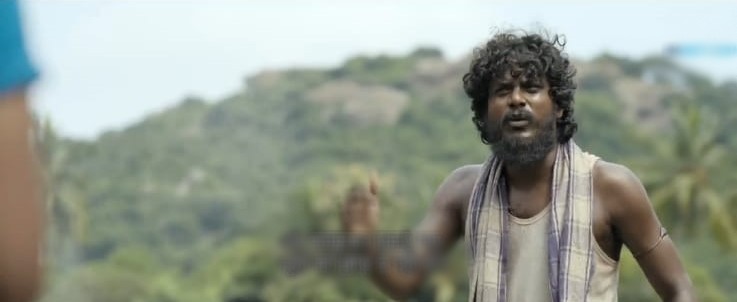
Figure 1. One of the first visuals of the Dalit Male lead, Rajakannu. Source. Still from Jai Bhim. The visual representation of the Dalit communist leader, who politicised the event of police brutality and missing convicts in an attempt to find Rajakannu at his wife Sengeni's request manifests more structural strength than that of the first group of Dalit men. Despite feeling threatened the Dalit leader anchored on his organisational strength and walked up to the regional head of the police. He resisted by saying, 'All the missing men are tribals. If you don't take any action, you have to answer the DGPO, Home Secretary, SC/ST Commission.'[65] The marginalised location of the Dalit communist leader was trumped by the structural resistance he could ignite. There is a stark contrast in the appearance between these two sets of Dalit men. While Rajakannu’s dress is worn out and his appearance is dishevelled, the Dalit leader is presented in a bright white dress with a pristine mien. The white dress, in the context of India symbolically represents direct political engagement. Therefore, the appearance not only introduces a divide between the Dalit men and the non-Dalit men but also fosters a structural difference within the Dalit community as well. The introduction of the Dalit characters in Article 15 is varied. The opening sequence depicts the fathers of the victims singing in a group (see Figure 2), and the lyrics reflect the imbalance of lifestyle owing to caste and class differences. The men cannot be differentiated from the crowd. There is a stark contrast in the selection of the introductory background music. While Ayan's journey is marked by the song 'Blowin' in the Wind'[66] and a copy of The Discovery of India, suggesting a journey in his search for the soul, the song of the Dalit stands close to their basic survival needs.[67] The dingy shade with the rainy background appears in stark contrast with the flamboyant government car of Ayan. This consciously introduced difference in depiction creates a dichotomy between hegemonic masculinity the peripheral masculinities. 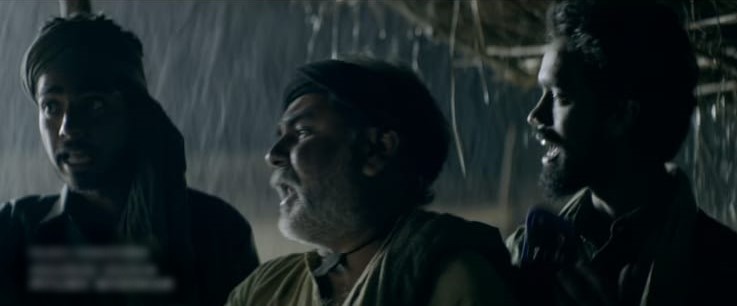
Figure 2. The Dalit singers during the opening credit scene. Source. Still from Article 15. The rest of the Dalit men with narrative significance appear as part of the crowd (as seen for Kisan Jatav). They do not claim subjective prominence. Neither do they surface as a furtively appearing dissident (as seen for Nishad). Kisan Jatav and Nishad offer two conflicting philosophical positions within the Dalit narrative and thus design two opposing frames of masculinities. Their Dalit identity is positioned against the multidimensional question of context and awareness. Jatav's father was a sweeper in one of the local schools but he broke through the glass ceiling and ended up acquiring a government job as a policeman. The event reflects the initiatives taken by an independent India for the development of the Dalits and showcases the positive impact of the structured system of governance. Jatav’s faith and its eventual manifestation are the emblematic representations of the larger state apparatus. He accepted his peripherality as a man against other upper caste officials and focused on personal growth by exploiting the opportunities offered by the system that recognises the existence of caste hierarchy. Nishad on the other hand believed in affecting changes by dismantling the existing order of things through partially induced aggression and violence. Despite being a promising student, he chose this path of resistance and ascertains a claim at some of the idiosyncratic qualities of hegemonic masculinity. Charu Gupta in her ground-breaking work, The Gender of Caste (2016), explicates this dichotomous reception of Dalit masculinity. She introduces two categories to elucidate further, 'Dumb, Dutiful and Deferential' and 'Defiant and Dangerous.'[68] While the physical depiction of young Dalit men suggests strength and grit; their psychological acceptance of the position of subservience renders them weak. The on-screen appearances of Nishad (whose choice of clothes is more refined with a well-groomed visage) and Rajakannu condense these ambiguous and pluralistic subjective positions (between the anatomical category of man and socio-cultural dimensions of masculinities) and complicate the generic understanding of hegemonic masculinity. The aspects of physical appearance contribute to the formation of Dalit male subjectivities which differ from the traditional masculine subjectivities. Dalit male subjectivity The notion of subjectivity and its claim lay dormant for the Dalits. Mahamadul Hassan Dhabak in his discussion of Dalit autobiographical narratives has brought forward the politics of discarding the caste bodies and how this practice contributes to the shaping of subjectivities.[69] He brings in the theoretical framework of 'the abject' as offered by Judith Butler to explore the location of the Dalit individuals. According to Butler, the 'unlivable' and 'uninhabitable' areas of social life that are heavily occupied by people who do not have the status of the subject are what the term 'abject' identifies.[70] Dhabak claims that the caste dynamics create a subject/object binary for the caste and the outcaste body. The Dalits become outsiders in order to sustain the power hierarchy.[71] The marginalised masculinity of the Dalit men comes into focus through their spaces of dwelling,[72] their socio-cultural position against upper caste men and their bodies as zones of violence. Since the beginning of the film Jai Bhim, the audience experiences an inherent hostility for the Dalits in the upper caste characters and other hierarchically superior Dalits. The rejection of the outcaste body becomes evident through the frown of the motorbike rider when Rajakannu was about to be taken to the headman's house to catch a snake (see Figure 3). 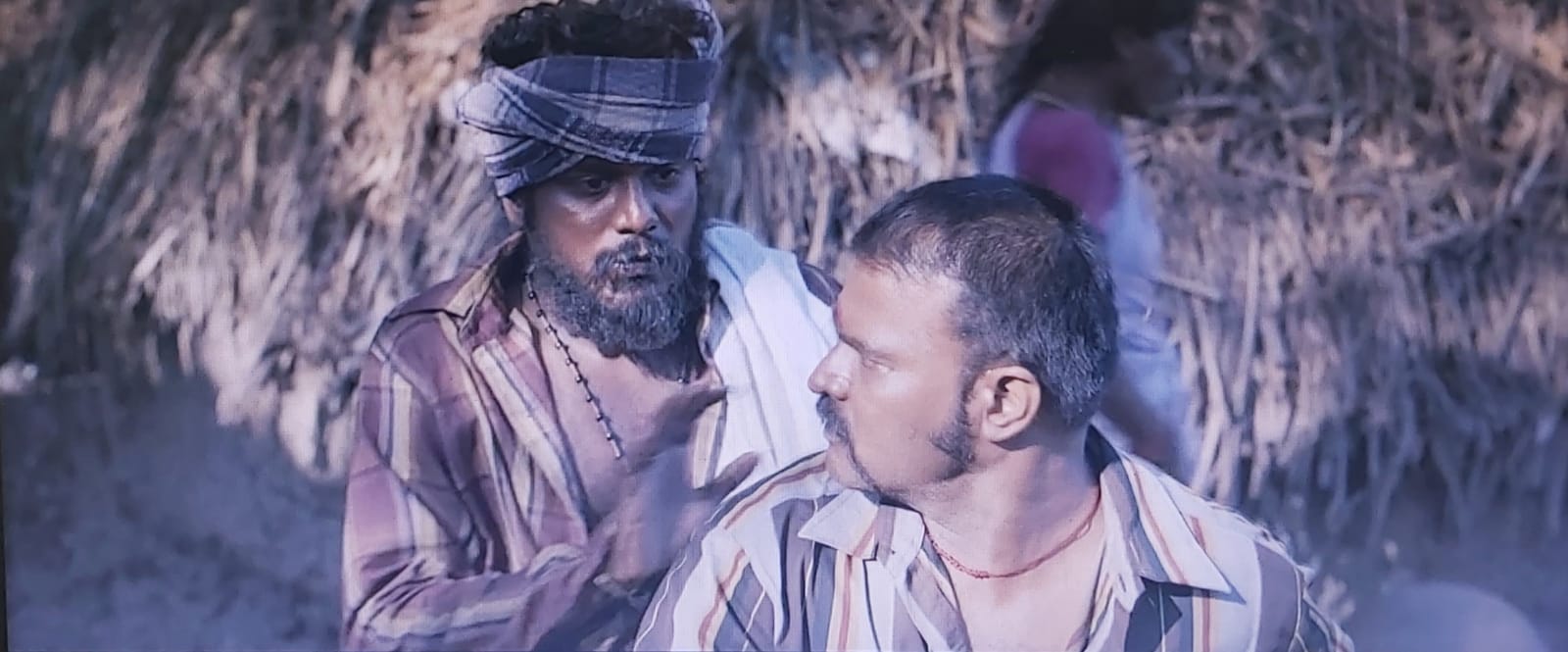
Figure 3. The revulsion of the Village Headman's minion when Rajakannu touched his back. Source. Still from Jai Bhim. The elements of space and light have been deftly dealt with in both films while depicting the Dalit male bodies and their subjectivities. The sequences shot within spaces with a direct exchange with upper caste men, for example, the police station, the school, the hospital and the workspaces of the Dalit men, present the servility (through verbal and non-verbal modes) of Dalit men against upper caste hegemonic masculinities. On the contrary, the home space (out-of-town communities) captures their superiority within the gender binary of the family. Even the spaces beyond the boundary of the city like the seashore where the tribal festival was taking place, or the dilapidated building of Nishad and Ayan's rendezvous fosters the autonomy of the Dalit male. One symbolic use of space is observed through the depiction of the swamp in Article 15. The swamp is considered to be a forbidden space for upper caste people to walk in and by the end of the film a team of police officers led by Ayan treads through the mire to reach the other side in search of the last missing girl. The crossing of the swamp represents the bridge between the casteist poles and the struggle of passing allegorically depicts the difficulty of mending the gulf. The marginalised position of Dalit autonomy and the exclusivity of their cultural manifestations are brought on screen through a short-lived but significant montage of shots during one of the lesser-known festivals celebrated on the shore outside of the city (see Figures 4 and 5) in Jai Bhim. 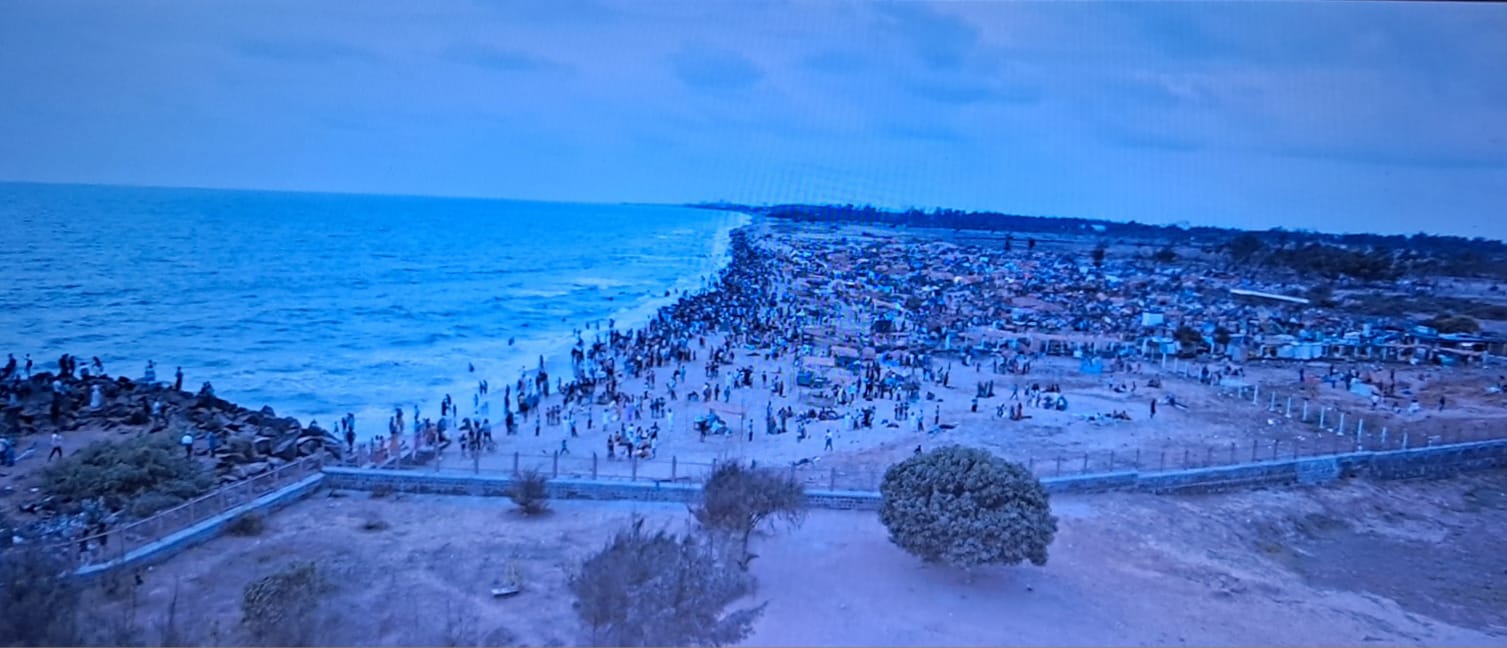
Figure 4. The long camera shot of the Dalit festival. Source. Still from Jai Bhim. 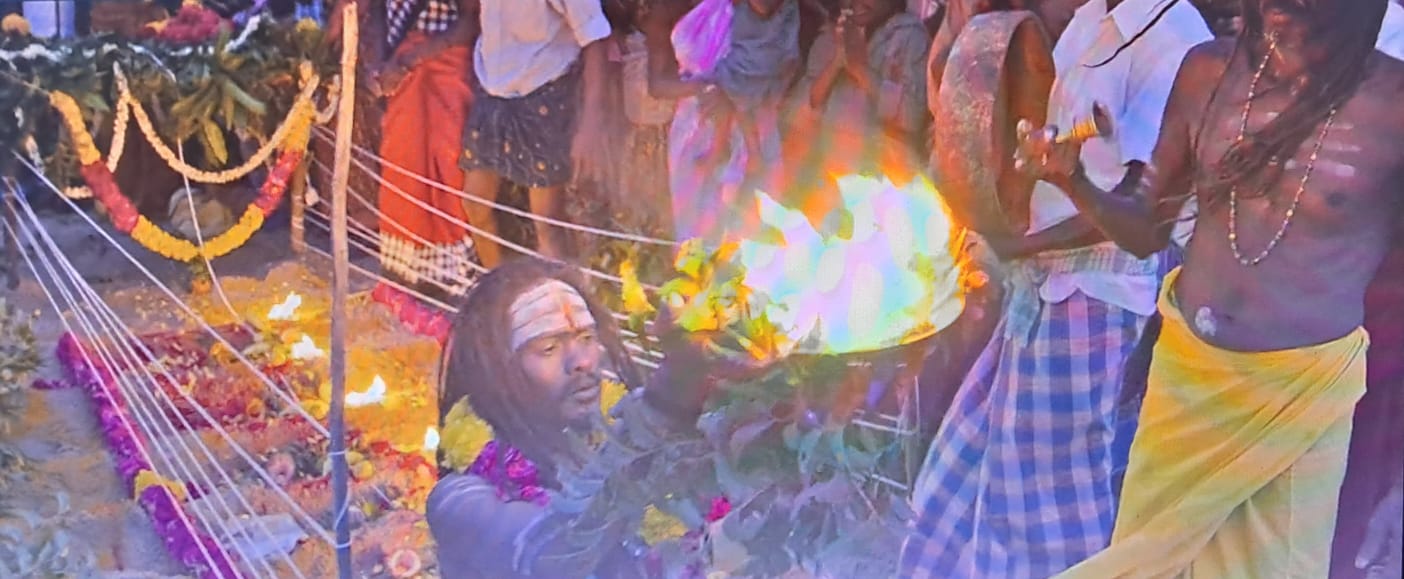
Figure 5. Fleeting shots of the Dalit festival without any narrative explication. Source. Still from Jai Bhim. Another visualisation of this rejection is depicted through the shot of the Dalit men standing in a school headmaster’s office requesting admission for a bright Dalit boy. They stand right next to a couple of empty chairs (see Figure 6). Besides denying to officially register the child as a student of the school, the headmaster doesn’t offer the guardians to take a seat. A close observation of the newspaper reports concerning violence against Dalits in India promotes the idea of the ways that the animosity harnessed by the upper caste individuals instigate these crimes. The rejection of Dalits belonging to the same socio-economic standard lays the foundation of the hostility against Dalits. The disrespect emanating from the approach of the headmaster is highlighted through the contrasting image of the upper caste man and his son being offered a seat when they walk in for an official document right after the dismissal of the Dalit child. The director uses the empty chairs with artistic brilliance to showcase the intentional divide created through small but significant gestures. On several occasions, the audience witnesses how the Dalits are denied their fundamental rights offered by the constitution. They get deprived of basic education, voting rights and land ownership. 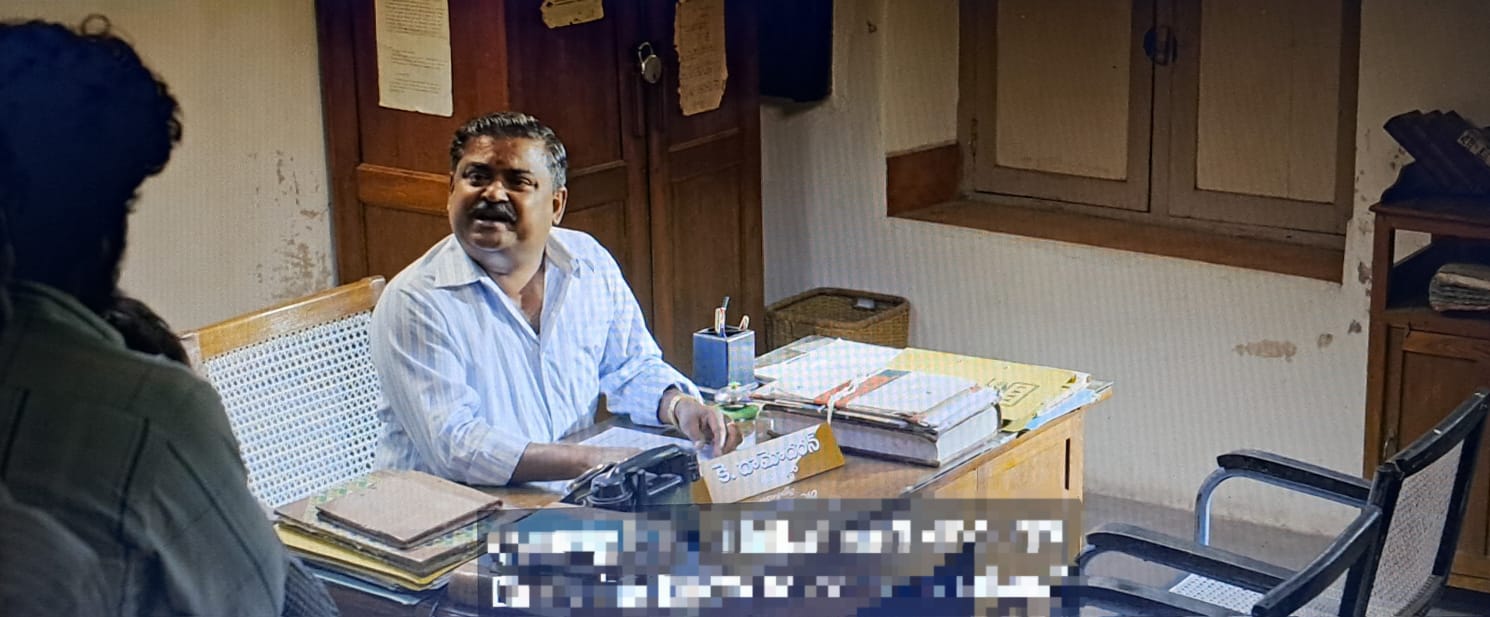
Figure 6. The rejection of Dalit men by the upper caste school headmaster. Source. Still from Jai Bhim. Masculine subjectivity is fluid and its different components compete with each other. While hegemonic masculinity assumes a position of superiority over femininity, it represses other forms of masculinity. Dalit masculinist subjectivity falls under the category of this second order of masculinity. It is often subjugated by men in power and thus enables a sense of paradox. The identity of being a man is a part of a dominant social category of the gender system which is fractured by the narratives of hegemonic masculinity.[73] Through an exploration of the subject position, multidimensional masculinity investigates how the social construction of assigned male roles not only disrupts the position of women in society but also makes it difficult for other masculinities.[74] In this particular context, Dalit men suffer the brunt. 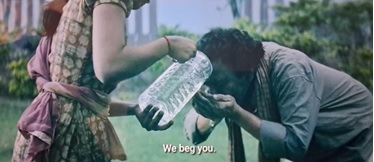
Figure 7. The sense of purity and the precarious position of the Dalit male. Source. Still from Article 15. The otherness of the Dalits and the convictions that they survive owing to the mercy of the upper caste people who get to decide what the lower caste deserves are the cornerstones for harbouring this hostility. Article 15 registers no exception. The notion of purity and the consciousness around the maintenance of the order of hierarchy reeks throughout the narrative of the film. The use of a jug by a servant at the upper caste official’s house instead of a glass while offering Dalit man water to drink crystallises the divide (see Figure 7). The factory owner Anshu Naharia's (played by Veen) passive-aggressive response to Ayan and the remorseless acceptance of his brutality against the Dalit girls foreshadows the scales of patriarchal hegemonic masculinity. The historical imbalance in the distribution of power between men and women leads to discrimination against women. The ascribed superiority of men creates a provision for inflicting violence on women. A multidimensional reading of the Dalit characters shows how the assignation of Dalit masculine subjectivity is seen as an extension of patriarchal values. The normalisation of the accusation of the honour killing of girls among the lower caste people in Article 15 and the conviction of committing theft for a poor Dalit man in Jai Bhim, demonstrate how the Dalit male subjectivity is prejudice stricken. Dalit male bodies as sites of violence Sinha and Gnanavel have brilliantly used the trope of violence to render Dalit bodies either insignificant or invisible. Through analysis of the exchange between gender and caste Charu Gupta eventually arrived at a partially definitive model of masculinity as she writes that within the discourse of masculinity, the Dalits have remained uncannily invisible or appeared just as '"otherised" negative referents.'[75] The introduction of caste keeps their masculinity, sexual ideology and identities at bay. Structurally speaking, both cinematic texts record unspeakable acts of violence against Dalits. The tool of violence is used against Dalit male bodies on three occasions. First, to control and disempower the Dalit resilience as seen in the case of Nishad's killing by the state in the name of pacifying brewing resistance. Second, acts of violence enable the men in power to feast on the innocence and invisibility of vulnerable Dalit men to gratify the need of the upper caste men. This motif gathers flesh through the sequences of physical, custodial atrocities carried out against Rajakannu and his family or the psychological manipulation of the fathers of rape victims. Finally, through violence, the men bearing the beacon of hegemonic masculinity attempt to prove their masculinity (primarily hegemonic) to others by using women as pawns. The sequences of physical torture in Jai Bhim put the issues of Dalit masculinity in perspective. When Mosakutty's (the brother-in-law of Rajakannu) request to let his sister-in-law leave because she was a woman was denied,[76] one of the officers ensured the dismantling of his male sex role by brutally violating his body and taking off the underskirt of the woman. The act of Mosakutty identifying as a man is subverted. An exposition of Dalit masculinity can be furthered by analysing the treatment of Dalit women in the hands of upper caste men. The brutal punishment of Dalit males and the warped logic of caste's sexual economy (where the upper caste men claim authority to use violent measures or sexual exploitation on Dalit women) make these acts of violence appear as two sides of the same coin to reinforce caste authority.[77] The inability to protect oneself, a woman and a constant fear of death put the male sex role for the Dalits into question. Within the theorisation of masculinity, one key aspect is caballerismo which adds an edge to the male aggressive pride of machismo. Caballerismo is all about being a provider and a protector of the family.[78] This institutionalised masculine identity is challenged through the caste narrative and leaves male Dalit bodies inert. This sequence must be placed against the context of a troubled Rajakannu who has long been unable to provide basic comforts to his family. During one of his short monologues right after one of the mud walls of his home falls apart due to torrential rain, he says, 'I must have baked so many bricks. But I couldn't build a proper house for my family.'[79] The close-up shot of a tied-down Rajakannu on the floor (see Figure 8) presents a contorted form of masculinity, where the male gender identity is slowly shrunk into an 'outcaste' body. 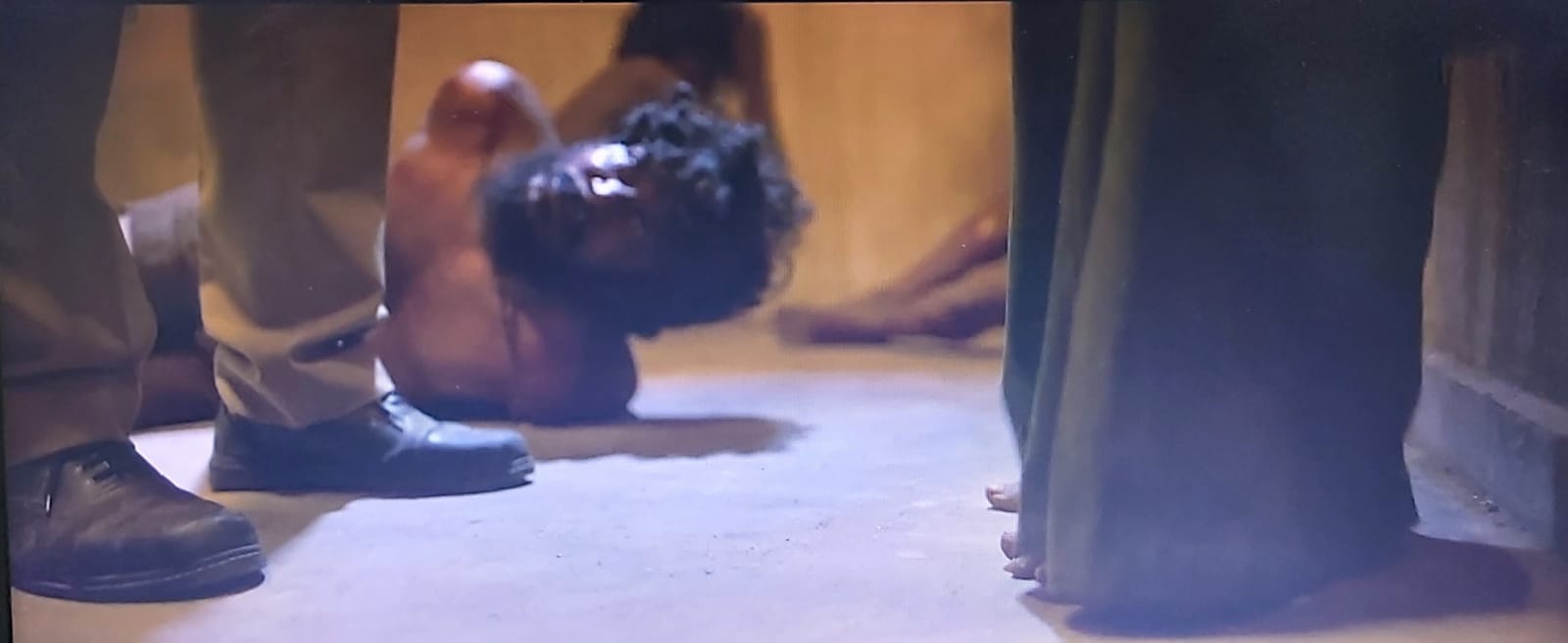
Figure 8. A tied-up Rajakannu on the floor. Source. Still from Jai Bhim. The inability of Dalit fathers to find justice for their daughters puts forwards a similar concern. Their vulnerability and sense of precarity dig deep into the psyche of the audience through the acceptance of the sexual violence on their daughters. While unofficially complaining to Ayan, they asserted that they could accept the physical and psychological brutality but it’s the killing that they cannot accept. Within the discourse of hegemonic masculinity, the component of resilience claims its mark. The Dalit men did not fall apart despite the police brutality. Their resilience is placed against the obstinate aggression of the police officers who were clueless about how to make them confess to crimes these men never committed. The conflict between torture and endurance eventually makes the torture fall apart as the sub-inspector Gurumoorthy (played by Tamizh) kicked Rajakannu's chest hard enough to suffocate him to death. The acts of violence in Jai Bhim delineate further the narrative of the subject/object binary of the upper caste/Dalit lives. The corrupt police officers put all their might into coercing the Dalit men to accept blame for a crime they never committed in both films. The sequences shot in police custody use light (rather than darkness) in such a way that the Dalit men in custody appear as nothing more than non-living objects. The invisibility of the Dalit bodies vis-à-vis Dalit masculinity is a point of contention for Gnanavel. The courtroom drama is conjured around the petition for a habeas corpus and the disappearance of three Dalit men. The director navigates around this invisibility induced by the misuse of law and resurfaces the individuals by the just application of the same legal device through Chandru. The aspect of the missing Dalit body is a pivotal element in Article 15 as well. But Sinha invests considerable screentime exploring the resistance against the invisibility of the Dalits. The visuals begin with the voiceover of a WhatsApp message circulated by Nishad asking Dalit men to discontinue their assigned responsibilities. The following sequence shows a man shouting 'Jai Bhim (Long live Bhim)' while disposing of garbage in front of the police station.[80] The pile of garbage and the overflowing drains made the presence of the Dalits symbolically visible (see Figure 9). Within the grand narratives of national consciousness, the Dalit remains invisible.[81] Their contribution often goes unnoticed. The visibility and the contribution of the Dalit within the everyday functioning of a nation is brilliantly celebrated by an unusual juxtaposition of non-diegetic instrumental music of the song Vande Mataram and a scavenger cleaning the sewage (see Figure 10). 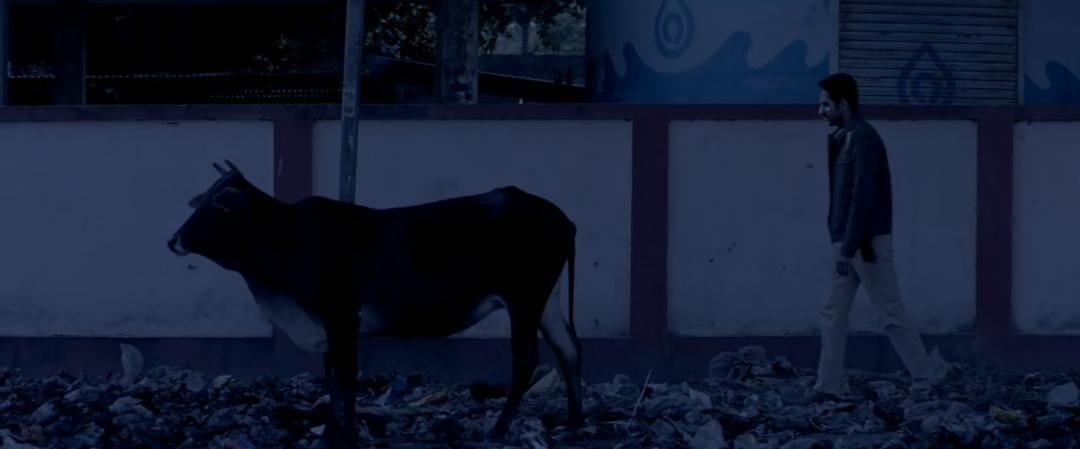
Figure 9. The sequence where Ayan walks through the garbage pondering on the complexity of the situation. Source. Still from Article 15. The use of light is worth noticing in this work of cinematographer Ewan Mulligan. Most of the significant sequences concerning the repression of the Dalits and of their resistance are shot in low light. One of the most harrowing sequences of the hanging bodies of the brutalised Dalit girls or the sequence of walking through the piled garbage is specifically captured during the hours of dusk. The use of low light or closed spaces compels a focused observation on the part of the audience and manifests the marginality of Dalit lives vis-à-vis Dalit men. 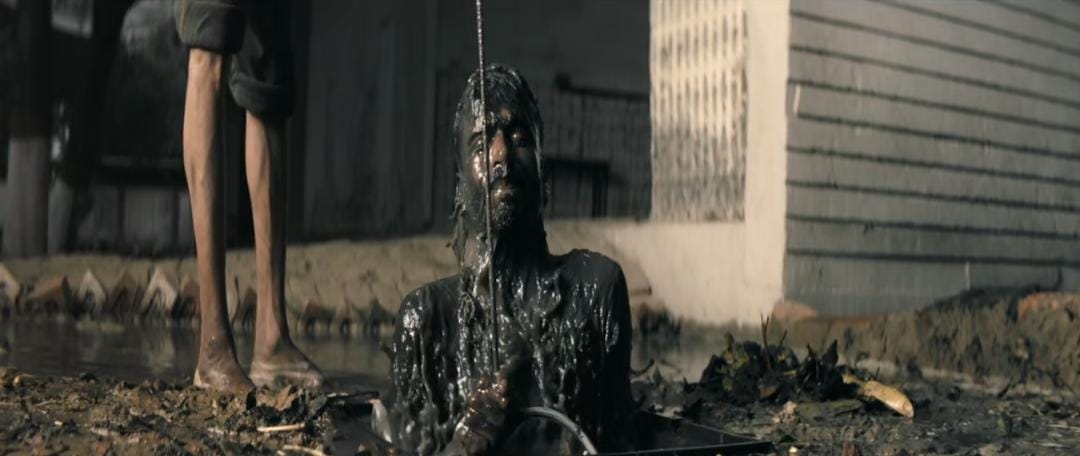
Figure 10. The scavenger returns to his service after Nishad's request. Source. Still from Article 15. While in Jai Bhim the visuals of violence and violated Dalit bodies predominate the narrative and showcase the vulnerability of Dalit masculinity. The acts of violence in the context of Article 15 are not custodial but exist beyond custody. Instead of physical violence against Dalits, the audience gets exposed to heinous acts of psychological and structural violence exacted by the corrupt cogs of the state apparatus. While the larger state-introduced structure aims to bring an end to casteist politics, the smaller components, owing to the inherent vice of corruption, misuse their strength to set the scale to zero. The emblematic figure of toxic masculinity in the movie, Bhramadatt Singh, who is also one of the sexual violators, threatens the lower caste female doctor (who's performing the post-mortem) and questions her integrity and fidelity by confiding in his colleague, 'This is the quota system for you. The girls were from the Scheduled Caste and so is the doctor. Our taxes paid for her education.'[82] The fathers of the rape and murder victims are threatened outside the morgue as they await release of the bodies. These helpless men were forced to accept the charge of honour killing. The Dalit men who were beaten up in the temple by the upper caste minions are silenced by the police. Intra-institutional physical violence in the name of caste takes place more than once when Bhramadatt Singh attacks Kisan Jatav as he could not keep the secret in front of Ayan. Throughout these filmic texts, Dalit masculinity exists within a space of constant flux, which allows for the potential of a multidimensional reading of masculinity. As context claims a core thread within the multidimensional reading of masculinity, hence the paradoxical presence of both hegemonic and non-hegemonic masculinity becomes imminent. The initial sequences of Rajakannu's life in his marital bliss where he promises to build a concrete home for his wife, look after his brother and test his limits for earning more establish him within the socio-culturally and socio-economically constructed male-sex-role spectrum as a provider and protector. Similar situations can be observed in characters like the unnamed fathers in Article 15. While Nishad being a rebel and an outcast enhances his machismo, Gaura’s (his love interest and the sister of the third missing girl) (played by Sayani Gupta) submission to his path confirms the hegemonic components of masculinity. The plurality of Dalit masculinity besides being simultaneously hegemonic and marginal offers a glimpse into the corpus of complicit masculinity that encompasses men who enjoy the privilege of patriarchy without enacting the dominant form of masculine behaviour.[83] Kisan Jatav, in this context, can be cited as an example. Since the beginning of the film Article 15, Jatav, despite being a Dalit, keeps on addressing the Dalits as the other and gets rebuffed by Ayan repeatedly. His constant attempt to be part of the dominant community finds a parallel in Shanti Prasad, the Dalit political leader who teams up with the upper caste leader Mahantji and keeps on denying his vicious claim to political prominence. Both hegemonic and complicit masculinity emit a sense of disengagement from the Dalits. The narrative content and the formulation of Dalit masculinity are furthered by Gnanavel and Sinha through the use of specific camera angles and shots. The use of camera angles in shaping Dalit masculinity This section will explore the use of camera angles in depicting the marginalised socio-cultural and socio-economic location of the Dalit men, their vulnerability and their precarity. The politics of representation of the bodies is further problematised and nuanced by the use of camera angles. Within the feminist discourse in India, on several occasions, the man/woman binary is posited as analogous to the outside/inside binary. A woman is considered to belong to the 'within' and the man is supposed to claim a space 'beyond.' This position of male sex role and masculinity is primarily considered to be superior, but for a Dalit man, the position is more convoluted. The exclusion of a Dalit man from the comfort, the civilisation and the upper caste social circle is ingeniously portrayed when Rajakannu was asked to push the car of the village headman. The position of the camera was inside the car and the frame simultaneously uses the rule of the third for the upper caste woman and the medium central shot for the Dalit man. Half of Rajakannu’s body was visible through the rear windshield (see Figure 11) and the focus was on him. This over-the-shoulder shot serves its purpose as it shows the audience the position of Dalit masculinity concerning upper class femininity. The traditional exchange between a man and a woman within the discourse of hegemonic masculinity is subverted as the caste identity supersedes the gender identity. A similar shot is used by Sinha when we see Gaura, the fathers of the victims and a couple of other Dalit people at Ayan's place begging for justice (see Figure 12). The long shot offers a position statement of the Dalit men. They exist at the outskirt of the outside. The camera zooms in (to focus on the topic in the frame and to swiftly change the viewer's attention) from within Ayan's quarter and ends up with a close shot of the fathers with countenances reflecting pain, dejection and hopelessness. This inspires an understanding in the audience concerning the nature of Dalit man's marginalised masculinity. The multidimensional understanding of the significance of outside space for Dalit men unearths a completely different narrative. The space of empowerment for hegemonic masculinity becomes a space of oppression for the Dalit male. On several occasions, the use of zoom shots reconfigures the viewers' response by creating a sense of fear and claustrophobia by fixating their attention on specific subjects. The focus on the fathers' faces or a tortured Rajakannu (see Figure 13) churns the paranoia within. 
Figure 11. Rajakannu, while pushing the car of the village headman. Source. Still from Jai Bhim. 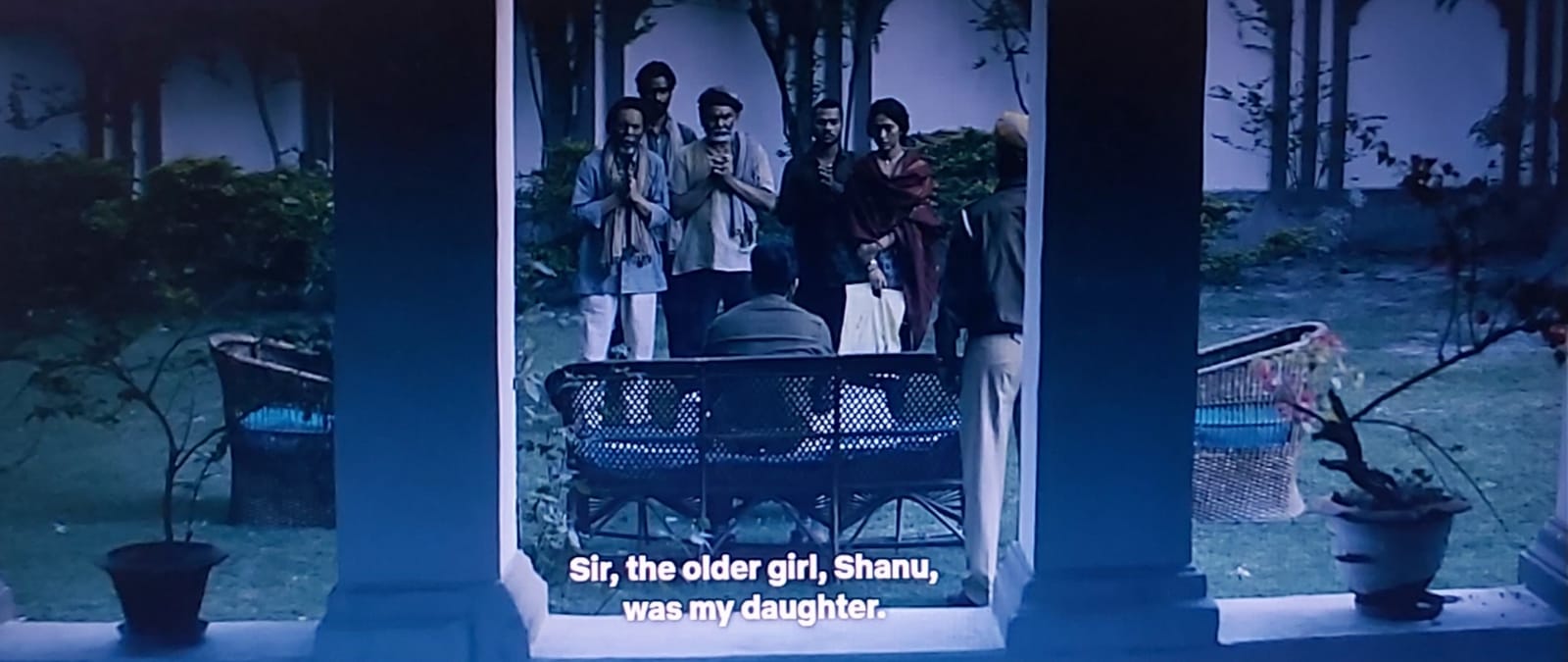
Figure 12. The fathers of the victims at Ayan's place. Source. Still from Article 15. Gnanavel uses two zoom-out shots to represent the masculine fervour of endurance for both the upper caste and the lower caste people. The fundamental impetus behind zooming out ensures the appearance of a context. A specific on-screen action gets located within the broader narrative of the filmic text. The contextual nature of multidimensional masculinity is explored through the close-up shots of Mosakutty’s tied and stretched hands, and Chandru’s fist. The zooming out that follows allows the audience a context as both these images represent resistance against the oppression of the state apparatus (custodial torture and legal conflict) on levels of physical and psychological strength. The challenges caused by the state apparatus are faced with the masculine ethos of resilience, but the streamlining of hegemonic and Dalit subjectivity with two differing contexts (i.e., to save oneself and to claim one’s rights) assigns a pluralistic reading to the masculine idiosyncrasy. As the state-mandated security for its citizens often fails to protect the Dalits, the struggle becomes limited to physical endurance. I.G. Perumalswami’s (played by Prakash Raj) encounter with a group of Dalit people who suffered violence through the malpractice of legal power, ascertains this tale of survival, vulnerability and precarity against police brutality and victimisation. These narratives corroborate the significance of physical endurance. While for a non-Dalit man, the struggle is in search of rights, for a Dalit man it's one of survival. 
Figure 13. The close-up shot of Rajakannu. Source. Still from Jai Bhim. The sequence of custodial violence in Jai Bhim is primarily shot from a higher angle, depicting the Dalit as weak and helpless (see Figure 14) simultaneously rendering the officers empowered. The high-angle shot of the police officer (see Figure 14) makes him appear more in control than the rest of the men present in the frame. An intermixed camera angle shot remarkably adds to the shaping of Dalit masculinity. In Figure 15, a combination of the ground-level and parallel shots appears. Besides encapsulating the plight of Rajakannu, the ground-level position of the camera asserts the faceless presence of a casteist system by capturing the legs of the officer in uniform (see Figure 15). 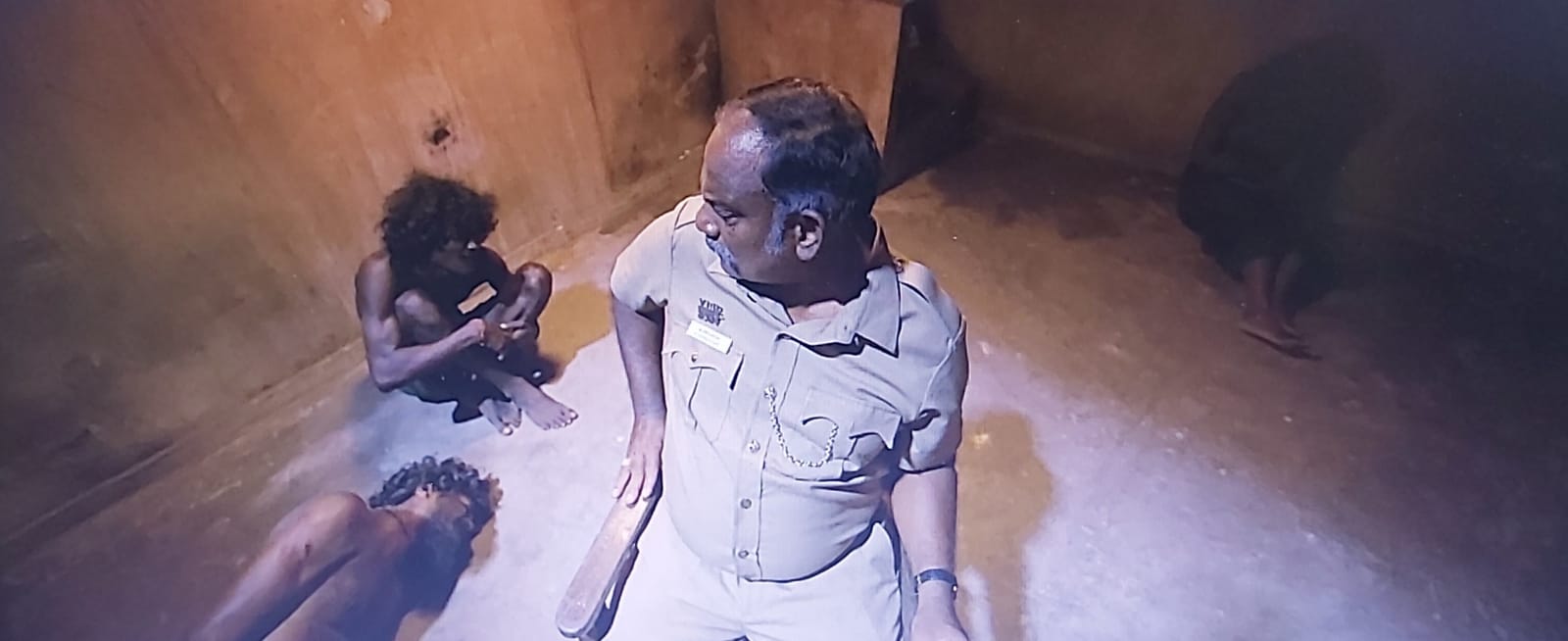
Figure 14. The high-angle shot depicts the Dalit men as vulnerable. Source. Still from Jai Bhim. 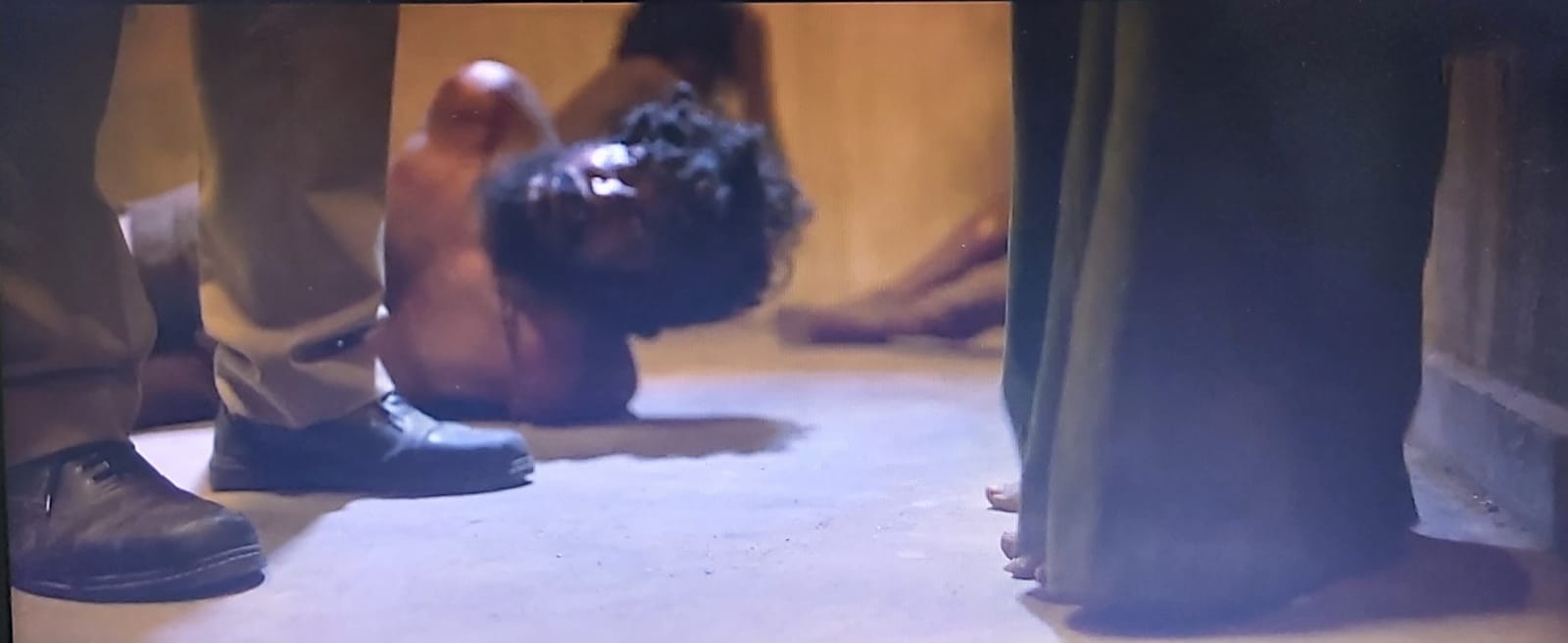
Figure 15. The ground-level shot of a tied-up Rajakannu. Source. Still from Jai Bhim. 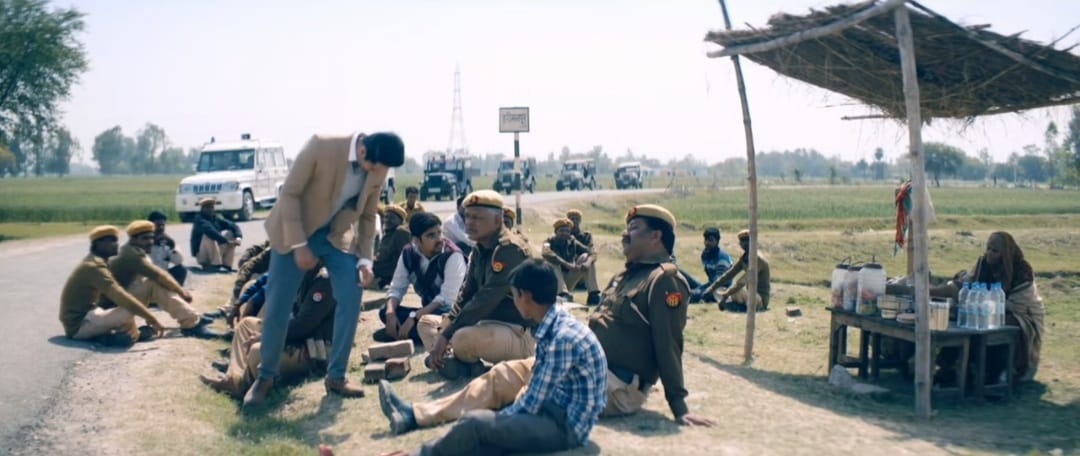
Figure 16. Ayan and Kisan Jatav with others are sitting on the ground and sharing food. Source. Still from Article 15. Both these films set a journey toward the emancipation of the marginalised and by the end, the directors introduce a scalable visual aspect exacting justice. Sinha's use of medium-long and pan shots focusing on the faces of the police officers mitigates the invisibility of the Dalit and the discrimination against them. He shows everyone (irrespective of their caste identity) sitting on the ground with an old woman (possibly a Dalit) selling roti (traditional flatbread in India) and sabzi (cooked vegetables) (see Figure 16) in a shanty. The same sequence shows Jatav sharing a bottle of water and food with Ayan which subverts his initial hesitation and exclusionary Dalit consciousness. The dilution of this regressive subjectivity into inclusion is made complete through Sinha’s use of the blowhorn of a passing truck to subsume the old woman's reply when Ayan asks her about her caste. 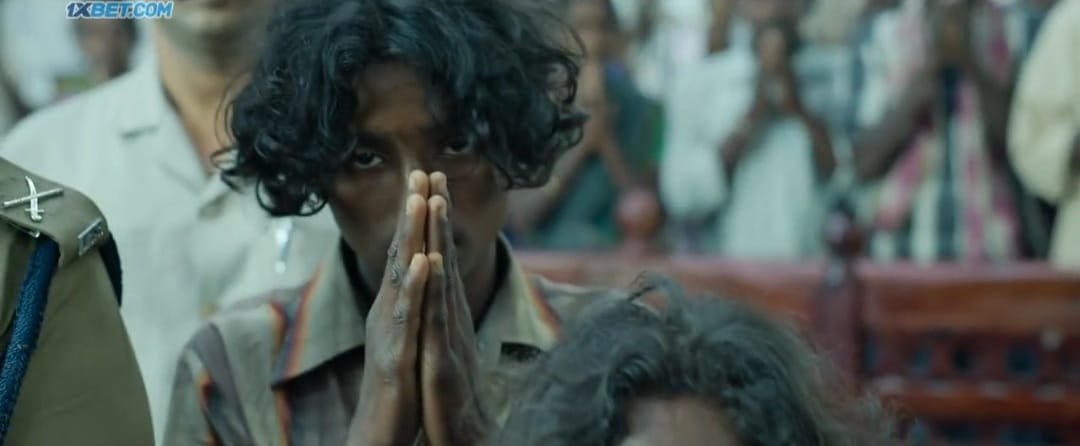
Figure 17. The point of view shot and the enhanced visibility of the Dalits. Source. Still from Jai Bhim. The use of a point-of-view shot (see Figure 17) in Jai Bhim once the court case is resolved negotiates the visibility concern of the Dalits. The Dalit men were made more visible to the audience through the empathetic gaze of Chandru. They rest at the eye level of the non-Dalit protagonist and claim their narrative significance. The deconstruction of hegemonic masculinity and the emergence of 'brotherhood'[84] The academic intervention into the territory of Dalit masculinity is challenged due to the presence of non-Dalit saviour figures. The hero-centric narrative within the popular cinema discourse in India is too rooted to do away with.[85] Both filmic texts end up celebrating the fights of Chandru and Ayan vis-à-vis the fights of the Dalit men. The peripherality of the Dalit men remains, and a sense of empathy is transmitted to the audience from the protagonists. But an argument can be formulated against these politics of casteist expression in the films. The use of the premise of the lived experiences of Dalit men is more than just a context. One of the formative questions since the beginning of the academic intervention of Dalit masculinity has been, 'What makes Dalit masculinity different?' Dalit masculinity cannot be contained within the monistic representation of hegemonic and casteist narratives of masculinity prevalent in India, because it simultaneously subverts the male-sex role and conforms to it. These masculinities harness the potential of the emergence of non-hegemonic counter-narratives of masculinity. Neither Chandru nor Ayan belongs to the fold of casteist, hegemonic masculinity. They are empathetic, compassionate, inclusive, resilient, strong, honourable and emotional. Within majoritarian politics, the ideological construction of masculinity in India has been subjected to the dual narratives of Rama and Krishna, that is the warrior (or the ideal man) and the lover.[86] The non-Dalit leads in the films discussed break free from these crystalised subjectivities. These characters are unaware of the practice of discrimination and create a space to accommodate other (peripheral) masculinities. The ease with which Chandru accesses the lives of the Dalits and the way Ayan questions every aspect of existing bigotry provide a strong foundation for non-hegemonic masculinities. The subjugation of women (as identified within the crux of hegemonic masculinity as one of the building blocks) is replaced with a constant attempt to empower women as seen in the final scene where Chandru inspires the young Dalit girl to non-verbally claim the space with newspapers in her hands and legs crossed. Ayan too is extremely respectful of his wife Aditi (played by Isha Talwar) and never overpowers the decision-making process. The acts of empowering women take an epistemological turn when Ayan tells Amali (played by Sumbul Touqeer) about the confession of her brother (one of the perpetrators of violence), his suicide and his guilt. This brings forth an iconic example of the safeguarding of peripheral masculinity by the dominant one. Hence, in no way the non-Dalit leads of both these films can be identified as reflections of the predominant casteist narrative of masculinity. Rather, in them the notions of masculinity find a fresh possibility. The ontological construction of masculinity identifies certain behavioural traits as non-masculine.[87] Emotional suppression has always been associated with being a man. Neither the non-Dalit protagonists nor the Dalit men shy away from showcasing emotional vulnerability. When Nishad breaks down sitting next to Gaura or tears roll down Chandru's cheeks as he sees rain-drenched Sengeni and her daughter after the final verdict of the court, the ersatz nuances of masculinity get deconstructed. Conclusion Through conceiving these real-life-inspired narratives, the makers bring into question the subaltern crisis and make their voices audible. These films' critical and commercial success conveys a positive change in their reception. The directors consciously abstain from being didactic and focus on telling gripping tales. But both these works ended up creating an atmosphere of consciousness-raising concerning the position of Dalit communities and their plight. This article's focus has been exploring variegated aspects of Dalit masculinities by employing the model of multidimensionality. The multidimensional masculinity model depicts how, within the schematics of Dalit masculinities that can assert or subvert aspects of hegemonic masculinity, one can identify the emerging threads of non-hegemonic masculinities that function as the cornerstones of an egalitarian society that we envision. A focus on the context and overlapping subjectivities become significant instead of assigning a generalised perception of male-sex-roles and masculine idiosyncrasies. The history of masculinity in India has neither been lateral nor monistic. Unfortunately, within the ambit of popular media productions, the formation of hegemonic masculine images of mythical proportions has guided the material needs of the industry. The creation of hegemonic male characters that stand akin to the men the audience envisages accelerated the popularity of these productions. The surfacing of multiplex theatres in India indexed 'a larger transformation of a booming globalised economy and its domestic social changes.'[88] That said, the introduction of the over-the-top (OTT) platforms in 2008 started offering the makers avenues to delve deeply into the subtle socio-cultural and socio-economic issues[89] that have previously been limited to either the niche of parallel arthouse films or remained in conscious oblivion. The accessibility, and the ever-widening œuvre, have promoted the exploration of non-hegemonic contents within 'popular' space. The popularity of new non-hegemonic masculinities with the advent of modernity is a sign of advancement and inclusivity.[90] The film industry, the audience and the nation, in general, embark on a utopian journey where equality, autonomy, democracy and newly conceived spaces of sex prevail.[91] Against the reference frame of hegemonic, casteist, aggressive, toxic masculinity (as depicted through characters like A.G. Ram Mokan (played by Rao Ramesh), D.G.P. Radhakrishnan (played by V. Jayaprakash), S.I. Gurumoorthy, Veerasamy, Bhramadatt Singh, CBI Officer Panikar (played by Nassar), Anshu Naharia and more) the non-hegemonic masculinities of characters like Ayan, Chandru, Perumalswami and the Dalits create resistance. They redefine the epithets associated with masculinity, like machismo and caballerismo. Their masculine virtues can be carried out by anyone beyond their gender identity as Sengeni and Gaura fight for justice, keeping their hopes alive and performing the acts of protectors. These non-hegemonic narratives of masculinities offer a component of solidarity, a brotherhood that stands tall in the face of repression and manifests the dream of a nation that finds unity in diversity. Notes [1] Riya Mukherjee and Smita Jha, 'Reconstructing Dalit Masculinities: A Study of Select Dalit Autobiographies,' Sociological Bulletin 71(3) (2022): 454–70, specifically p. 454. doi: 10.1177/00380229221094790. [2] The word ‘Brahminical’ is an epithet coming from the noun 'Brahmin.' Brahmins are considered the pinnacle of caste identity within the varna system of India. [3] Aarakshan, 164 mins, 2011, produced by A.A. Nadiadwala and Firoz Nadiadwala, directed by Prakash Jha, Prime Video, accessed 11 December 2022. [4] Manjhi: The Mountain Man, 114 mins, 2015, produced by Bilal Khan and Deepa Sahi, directed by Ketan Mehta, JioCinema, accessed 9 December 2022. [5] Guddu Rangeela, 124 mins, 2015, produced by Sangeeta Ahir, directed by Subhash Kapoor, Hotstar, accessed 12 December 2022. [6] Sairat, 174 mins, 2016, produced by Nitin Keni and Nikhil Sane, directed by Nagraj Manjule, ZEE5, accessed 11 December 2022. [7] Mukkabaaz, 155 mins, 2017, produced by Aanand L. Rai, Vikramaditya Motwane, Madhu Mantena and Anurag Kashyap; directed by Anurag Kashyap, JioCinema, accessed 13 December 2022. [8] Kaala, 159 mins, 2018, produced by Dhanush, directed by Pa. Ranjith, Hotstar, accessed 12 December 2022. [9] Asuran, 140 mins, 2019, produced by Kalaippuli S. Thanu, directed by Vetrimaaran, Prime Video, accessed 13 December 2022. [10] The concept of hegemonic masculinity is borrowed from the model offered by R.W. Connell. He arrived at that definition after investigating the notions for more than a couple of decades (1983–2005). The framework functions on two rudimentary principles, i.e., the repression of women and a consciousness of an intermale hierarchy. The explanation is derived from: R.W. Connell and James W. Messerschmidt, 'Hegemonic Masculinity: Rethinking the Concept,' Gender and Society 19(6) (2005): 829–59, specifically pp. 832–33, doi: 10.1177/0891243205278639. [11] Article 15, 130 mins, 2019, produced and directed by Anubhav Sinha, NETFLIX, accessed 10 December 2022. [12] Jai Bhim, 164 mins, 2021, produced by Jyothika and Suriya, directed by T.J. Gnanavel, Prime Video, accessed 10 December 2022. [13] Started in 1912 with the release of the first silent film Shree Pundalik, Indian Cinema stands as anœuvre defining term for films produced within the geo-political territory of the country. The industry is further divided into language-specific terrains and productions e.g., Bollywood (Hindi), Mollywood (Malayalam) and so on. [14] Nenjuku Needhi, 132 mins, 2022, produced by Boney Kapoor, directed by Arunraja Kamaraj, Sony Liv, accessed 12 December 2022. [15] Orit Kamir, Framed: Women in Law and Film, Durham and London: Duke University Press, 2006, pp. 2–3. [16] 'Article 15 in The Constitution of India 1949,' Kanoon, n.d., accessed 12 December 2022. [17] Deivendra Kumar A, 'Jai Bhim: A narrative of downtrodden and the voice of the voiceless,' The Armchair Journal, 8 November 2021, accessed 11 December 2022. [18] The chaturvarnya system divides people (following the Hindu religion) in accordance with their caste identities (primarily based on occupations) into Brahmins (priests, theological scholars), Kshatriyas (warriors, rulers), Vaishyas (business people, farmers, merchants) and Shudras (servants, labourers, workers). [19] Nistula Hebbar, 'Mixed response to I&B Ministry's fiat on "Dalit",' The Hindu, 4 September 2018, accessed 12 December 2022. [20] Hebbar, 'Mixed response,' paragraph 4. [21] The term harijan was used by Mahatma Gandhi in 1932 to employ an umbrella identity for the individuals belonging beyond the caste narrative of India. In 1938 the use of the term was criticised by Babasaheb Bhimrao Ambedkar. Eventually, in 2017 the Supreme Court of India declared the term condescending and derisive as it reverberates a religion-specific identity and is used by the upper caste people. The history of the term harijan is brewed from: Ramanathan S., 'Stop calling Dalits "Harijan": SC calls the term abusive, as we remain ignorant and insensitive,' The News Minute, 27 March 2017, accessed 12 December 2022. [22] Article 15, 01:16:10–01:16:18. [23] Jai Bhim, 02:30–02:37. [24] Athena D. Mutua, 'Multidimensionality is to Masculinities What Intersectionality is to Feminism,' Nevada Law Journal 13(2) (2013): 341–67. [25] Mutua, 'Multidimensionality is to Masculinities,' p. 355. [26] Article 15, 51:08–51:45. [27] Elisa Pezzotta. 'Film Analysis: A Comparison Among Criticism, Interpretation, Analysis and Close Analysis,' Wide Screen 1(2) (2010): 1–23, specifically p. 5. [28] Pezzotta, 'Film Analysis,' p. 2. [29] Gabriele Griffin, 'Discourse Analysis,' in Research Methods for English Studies, edited by Gabriele Griffin, 93–112, Edinburgh: Edinburgh University Press, 2005, specifically p. 93. [30] Joshil K. Abraham and Judith Misrahi-Barak, 'Contents,' in, The Routledge Companion to Caste and Cinema in India, ed. Joshil K. Abraham and Judith Misrahi-Barak, v–viii, New York: Routledge, 2022. [31] B. Geetha, 'Ellā Manusanum inga onnu illa: Imag(in)ing the Claustrophobia of Caste in Pariyerum Perumal,' in The Routledge Companion to Caste and Cinema in India, ed. Joshil K. Abraham and Judith Misrahi-Barak, 387–401, New York, NY: Routledge, 2022. [32] Ajay Gehlawat, '"Aadat Se Majboor"/"Helpless by Habit": Metrosexual masculinity in contemporary Bollywood,' Studies in South Asian Film & Media 4(1) (2012): 61–79, doi: 10.1386/safm.4.1.61_1. [33] R.W. Connell, Gender and Power: Society, the Person, and Sexual Politics, Oxford: Polity Press, 1987, pp. 183–88. [34] R.W. Connell, Masculinities, Oxford: Polity Press, 1995, p. 85. [35] James W. Messerschmidt, Hegemonic Masculinity: Formulation, Reformulation, and Amplification, London: Rowman & Littlefield, 2018, p. 27. [36] C. Lakshmanan, 'Dalit Masculinities in Social Science Research: Revisiting a Tamil Village,' Economic and Political Weekly 39(10) (2004): 1088–92, specifically p. 1088. [37] Meghna Mehra, 'The Many Masculinities in Bollywood: 1960s to the Present,' Feminism in India, 16 October 2019, accessed 17 December 2022. [38] Mihir Bose, Bollywood: A History, New Delhi: Roli Books, 2006, p. 256. [39] Deewaar, 176 mins, 1975, produced by Gulshan Rai, directed by Yash Chopra, ZEE5, accessed 13 December 2022. [40] Sholay, 204 mins, 1975, produced by G.P. Sippy, directed by Ramesh Sippy, Prime Video, accessed 10 December 2022. [41] Dil Chahta Hai, 177 mins, 2001, produced by Ritesh Sidhwani, directed by Farhan Akhtar, NETFLIX, accessed 13 December 2022. [42] Ladies vs Ricky Bahl, 140 mins, 2011, produced by Aditya Chopra, directed by Maneesh Sharma, Prime Video, accessed 13 December 2022. [43] Vaastav: The Reality, 144 mins, 1999, produced by Deepak Nikalje, directed by Mahesh Manjrekar, Prime Video, accessed 14 December 2022. [44] Dhoom 2, 152 mins, 2006, produced by Aditya Chopra, directed by Sanjay Gadhvi, Prime Video, accessed 11 December 2022. [45] Mission Mangal, 127 mins, 2019, produced by Cape of Good Films, Hope Productions, Fox Star Studios, Aruna Bhatia and Anil Naidu; directed by Jagan Shakti, Hotstar, accessed 12 December 2022. [46] Chak De! India, 149 mins, 2007, produced by Aditya Chopra, directed by Shimit Amin, Prime Video, accessed 12 December 2022. [47] Tanu Weds Manu, 119 mins, 2011, produced by Vinod Bachchan and Shailesh R Singh, directed by Aanand L. Rai, JioCinema, accessed 13 December 2022. [48] Jayeshbhai Jordaar, 124 mins, 2022, produced by Aditya Chopra and Maneesh Sharma, directed by Divyang Thakkar, Prime Video, accessed 14 December 2022. [49] Gehlawat, 'Aadat Se Majboor,' p. 64. [50] Jullien Cayla, 'Following the Endorser's Shadow: Shah Rukh Khan and the Creation of the Cosmopolitan Indian Male,' Advertising & Society Review 9(2) (2008), doi: 10.1353/asr.0.0000. [51] Editorial, 'Top 5 Film Industry in India 2022,' Business Outreach, 11 May 2022, accessed 9 December 2022. [52] Praseeda Gopinath, '"A feeling you cannot resist": Shah Rukh Khan, affect, and the re-scripting of male stardom in Hindi cinema,' Celebrity Studies 9(3) (2017): 307–25, specifically p. 17, doi: 10.1080/19392397.2017.1411202. [53] Gehlawat, 'Aadat Se Majboor,' pp. 76–77. [54] Chhachhi, Amrita, ‘Neoliberalism, Hindutva and Gender: Convergence and Contradictions in the Provision of Welfare,' Feminist Dissent (5) (2020): 50–93, specifically p. 52. [55] G. Selvin Kasperov, 'An Analysis on the Portrayal of Male Protagonist in Tamil Films,' International Journal of Humanities and Social Sciences 8(5) (2019): 1–6. [56] Thinnai Talkies is an organisation that works on the extension of dialogues beyond films. [57] Siddarth Muralidharan, 'On the various shades of masculinity in cinema portrayals,' Frontiline, 7 November 2022, accessed 17 December 2022. [58] Connell, Gender and Power: Society, the Person, and Sexual Politics, pp. 184–85. [59] Dilwale Dulhania Le Jayenge, 189 mins, 1995, produced by Yash Chopra, directed by Aditya Chopra, Prime Video, accessed 14 December 2022. [60] Jeans, 172 mins, 1998, produced by Ashok Amritraj and Sunanda Murali Manohar, directed by S. Shankar, NETFLIX, accessed 12 December 2022. [61] '96, 158 mins, 2018, produced by S. Nanthagopal, directed by C. Premkumar, Prime Video, accessed 12 December 2022. [62] Vishal Chauhan, 'From Sujata to Kachra: Decoding Dalit representation in popular Hindi cinema,' South Asian Popular Culture 17(3) (2019): 1–10, specifically p. 2, doi: 10.1080/14746689.2019.1673544. [63] David Bordwell and Kristen Thompson, Film Art: An Introduction, New York, NY: McGraw-Hill, 2003. [64] The caste identity of justice Chandru is a point of conflict as there is no direct or oblique suggestion in the film. His urban residence, education and representation of financial affluence suggest an emancipated status. This paper intends to focus on his sense of emancipation and empowerment, which renders him non-vulnerable. He is spiritually liberated from the emotional castigation of the upper caste individuals. [65] Jai Bhim, 54:48–54:58. [66] The song was written by Bob Dylan in 1962. [67] Jawaharlal Nehru, The Discovery of India, New Delhi: Penguin India, 2008. [68] Charu Gupta, The Gender of Caste, Ranikhet: Permanent Black, 2016, pp. 114–25. [69] Mahamadul Hassan Dhabak, 'Vulnerable Manhood and Subordinate Dalit Masculinity: A Critical Study of Select Dalit Autobiographical Narratives,' All About Ambedkar: A Journal on Theory and Praxis 2(2) (2021): 113–27, specifically p. 114. [70] Judith Butler, Bodies That Matter: On the Discursive Limits of Sex, London: Routledge, 2011, p. xiii. [71] Dhabak, 'Vulnerable Manhood and Subordinate Dalit Masculinity,' p. 115. [72] Marginalised masculinity encompasses men who belong to the periphery of the social, economic and cultural space. Within their communities, their masculinities might appear hegemonic, but the acknowledgement of the rest of the dimensions changes the power dynamics. The definition is borrowed from: Mimi Schippers, 'Recovering the feminine other: Masculinity, femininity, and gender hegemony,' Theory and Society 36(1) (2007): 85–102, specifically p. 88. [73] Dwi Wahyu Handayani, 'The Meaning of Masculine Subjectivity in Responding to the Impact of Climate Change,' Proceedings of the 2nd International Indonesia Conference on Interdisciplinary Studies 2021: 87–92, specifically p. 88. [74] Ann C. McGinley and Frank Rudy Cooper, Masculinities and the Law: A Multidimensional Approach, New York: New York University Press, 2012, p. 4. [75] Gupta, The Gender of Caste, p. 112. [76] Jai Bhim, 46:45-47:57. [77] Anupama Rao, 'Violence and Humanity: Or, Vulnerability as Political Subjectivity,' Social Research 78(2) (2011): 607–32, specifically p. 623. [78] Athira Krishnan, 'Representation of Dalit Masculinity in Literature,' International Journal of Science and Research 10(5) (2019): 426–29, specifically p. 428, doi: 10.21275/SR21510193049. [79] Jai Bhim, 09:40–09:50. [80] Article 15, 57:05–57:30. [81] Aditya Nigam, 'Hindutva, Caste and the "National Unconscious",' in Racism After Apartheid: Challenges for Marxism and Anti-Racism, ed. Vishwas Satgar, 118–36, Johannesburg: Wits University Press, 2019. [82] Article 15, 33:09–33:21. [83] Connell and Messerschmidt, 'Hegemonic Masculinity,' p. 832. [84] The word brotherhood is an analogy drawn with reference to the idea of 'sisterhood' within the discourses of feminism. [85] Parvathy N and Priyanka Tripathi, 'Locating epistemic (dis)privilege of female fans in select Indian narratives,' Feminist Media Studies (2023): 1–14, specifically p. 3, doi: 10.1080/14680777.2022.2161000. [86] Krishnan, 'Representation of Dalit Masculinity in Literature,' p. 428. [87] Merry Sylvester and Steven C. Hayes, 'Unpacking Masculinity as a Construct: Ontology, pragmatism, and an analysis of language,' Psychology of Men & Masculinity 11(2) (2010): 91–97. [88] Priya Joshi, Bollywood's India: A Public Fantasy, New York, NY: Columbia University Press, 2015, p. 123. [89] P.Y. Shalparni, B. Punyashree and R Ashok Kumar, 'Impact of OTT on Entertainment Industry in India,' International Journal of Engineering Research & Technology 10(11) (2022): 108–11, specifically p. 108. [90] Óscar Fernández Álvarez, 'Non-Hegemonic Masculinity against Gender Violence,' Procedia: Social and Behavioral Sciences 161 (2014): 48–55, specifically p. 53, doi: 10.1016/j.sbspro.2014.12.009. [91] Álvarez, 'Non-Hegemonic Masculinity against Gender Violence,' p. 53; Bhagya Shree Nadamala and Priyanka Tripathi, 'Contextualizing caste: review of the book The Routledge Companion to Caste and Cinema in India,' edited by J.K. Abraham and J. Misrahi-Barak,’ Media Asia (2023): 1–6, specifically p. 2, doi: 10.1080/01296612.2023.2200336 |

|